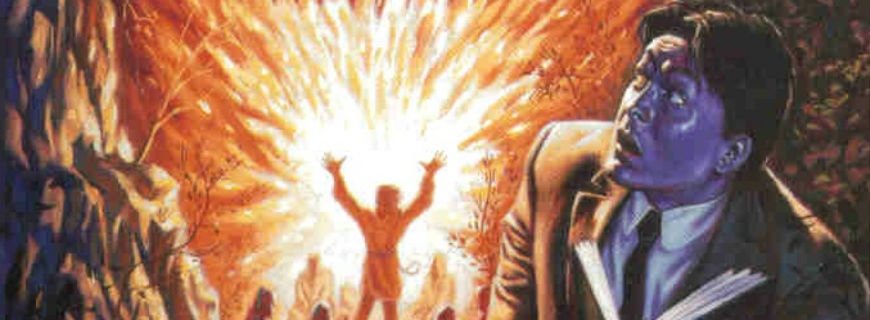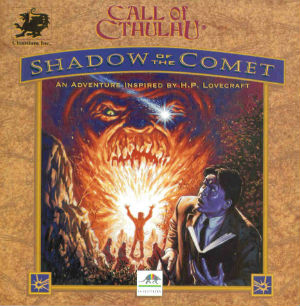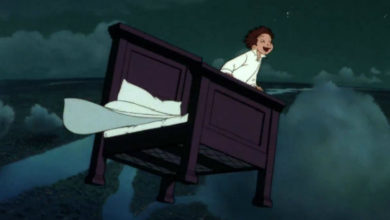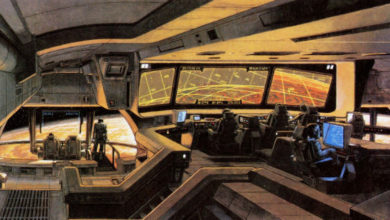Space Oddities: Shadow of the Comet (Infogrames, 1993)

Each month, Raz Greenberg reviews an overlooked piece of science fiction, fantasy or horror – be it a film, a television episode, a comic or a game – one that should have gotten more attention when it first came out and should still be remembered, in his opinion. This month, he digs up a forgotten Lovecraft horror story in game mode.
Known as the creator of the (in)famous Cthulhu Mythos – a set of stories linked together by the idea that reality as we know it is merely a friction of an interdimensional universe ruled by monstrous deities – American writer H.P. L

ovecraft (1890-1937) is considered as one of the greatest writers of modern horror literature. Adaptations of his work spread across a variety of media, but no medium, it appears, lends itself more easily to such adaptation than gaming. After all, turning people into the protagonists of an H.P. Lovecraft narrative brings the feeling of dread from his stories much closer than watching things happen to people on the theatre or TV screen.
Developers in the French gaming studio Infogrames were the first to realize this potential and bring Lovecraft officially to the age of digital gaming (Lovecraft stories have, of course, inspired tabletop role-playing game many years before this happened, as well as elements in otherwise unrelated digital games as Infocom’s text adventure The Lurking Horror). In 1992, they released Alone in the Dark, known for its breakthrough use of 3D graphics and considered a classic of the survival/horror genre. Their next Lovecraft-inspired game, Shadow of the Comet, was released a year later and did not receive the same kind of attention, which is a pity. Because while Alone in the Dark delivered its scares through keeping players at the edge of their seats, wondering what kind of Cthulhu Mythos abomination is waiting to leap on them from the shadows, Shadow of the Comet remained truer to Lovecraft’s tradition in developing its horror through narrative and atmosphere, slowly building a trap that closes around the players.
In Shadow of the Comet, gamers play John Parker, a mild-mannered British photographer who arrives at the American town Illsmouth where the clearest view of Haley’s Comet can be seen upon its coming passage (the game takes place in 1910). Parker intends to photograph the comet’s passage for his magazine, but as he finds out, quite a few of the town’s residence are interested in the celestial event for far more sinister reasons. Soon enough, he finds himself struggling to survive as more of the town’s hideous secrets are revealed.
The plot of Shadow of the Comet is divided into three days, and as noted above, slowly develops as Parker discovers more about his surroundings. Even during the first day, before supernatural horrors break out, casual conversations with the locals give an eerie feeling, and players soon realize that something is very, very wrong about the place. Despite the low-res VGA graphics, typical of the early 90’s, the developers have done an incredible job in creating a sense of visual horror as well, and each screen features a highly detailed and well-researched early 20th century background, coupled with impressive portraits of NPCs – both human and not-so-human. Musical score, although limited, also delivers the right chilling atmosphere.
Shadow of the Comet is an adventure game based on object-oriented and dialogue-oriented puzzles, and while the game starts with simple and logical enough tasks, it gets complicated quickly, with many of its puzzles requiring out-of-the-box thinking. Happily, this is not much of a problem today as it was upon the game’s initial release as the internet provides easy access to walkthroughs. Those who prefer a more challenging experience might want to try finishing Shadow of the Comet without any kind of help, but be warned – as the game progresses, penalties for taking the wrong steps or not being fast enough about taking the right ones usually lead to gory death (this being a horror game after all). At the time of the game’s release, a mouse driven point-and-click interface was the standard for adventure games, but oddly enough the developers of Shadow of the Comet chose to implement keyboard-interface in the game’s original release on floppy-disks. This changes with the CD-ROM version, which added not only mouse support, but also voice-acting (another standard for the era)… though I have to admit I didn’t find either too satisfying. The mouse-driven interface for the game is very clumsy compared to the elegant interfaces of the Sierra On-Line games at the time, and the actors who recorded the characters’ voices sound as though they’re trying too hard. I liked the game better when it played with keyboard and written text, though other people might differ.
Shadow of the Comet was followed by Prisoner of Ice, a loose sequel that featured even more impressive scope, taking gamers on a worldwide hunt for Cthulhu Mythos evils during World War II. While gorgeous-looking, it was a narrative disappointment compared to its predecessor, not quite capturing the same feeling of dread and leading to messed-up plot twists related to time travel. Still, it’s more than a worthy game experience to follow Shadow of the Comet with – and trust me, if you’re a horror fan, you’ll want more.
Where to get it: both Shadow of the Comet and Prisoner of Ice are available for download at GOG.com




